
Copernical Team
Powerful NASA-ISRO Earth-observing satellite coming together in India
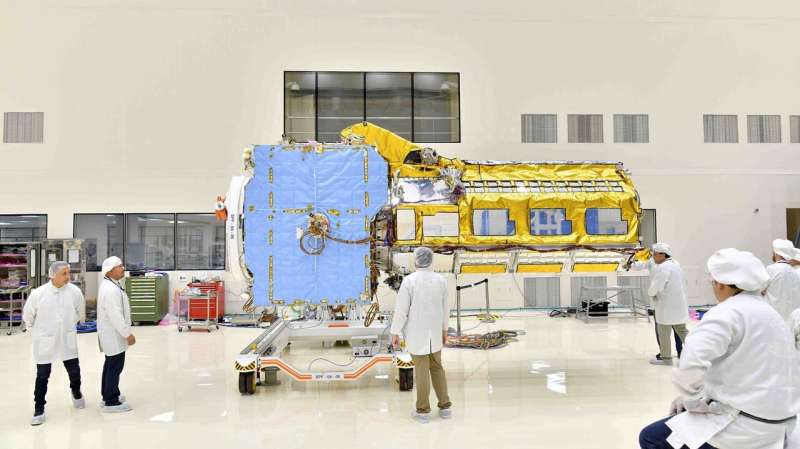
Built on opposite sides of the planet, the NISAR satellite will deepen our understanding of climate change, deforestation, glacier melt, volcanoes, earthquakes, and more.
Two major components of the NISAR satellite have been combined to create a single spacecraft in Bengaluru, India.
Examining our options for a lunar solar power satellite
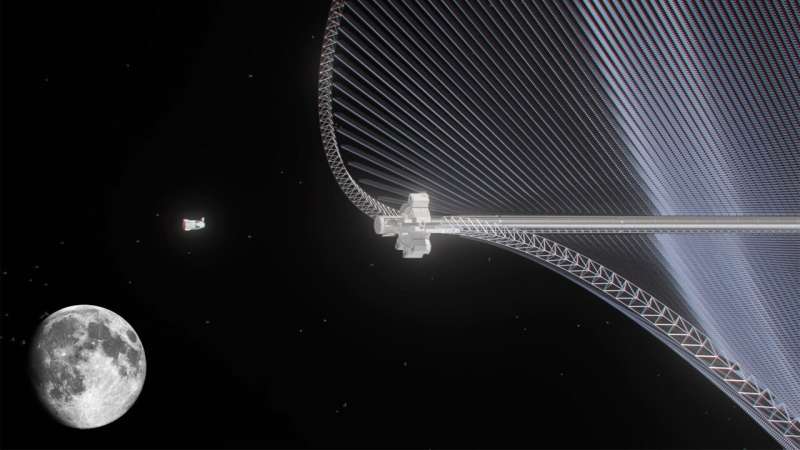
The concept of gathering some of the unlimited sunlight available in space, then transmitting it down to users, was first developed to serve the clean energy needs of planet Earth. But Space-Based Solar Power can also work for the moon.
As part of ESA's Open Space Innovation Platform Campaign on 'Clean Energy—New Ideas for Solar Power from Space', a study undertaken by Switzerland's Astrostrom company designed a Greater Earth Lunar Power Station, or GE⊕-LPS for short.
The study envisages a solar powersatellite constructed mainly from lunar resources (including moon-manufactured solar cells) that could deliver megawatts of microwave power down to receivers on the lunar surface, serving the needs of surface activities, including future crewed bases.
Taking inspiration from a butterfly, GE⊕-LPS feature V-shaped solar panels with integrated antennas, deployed in a helix configuration extending more than a square kilometer end to end. The design would yield continuous 23 megawatts of energy for lunar surface operations. The solar panels themselves are based on iron pyrite monograin-layer solar cells produced on the moon.
Located at an Earth-moon Lagrange point around 61 350 km from the lunar surface, the station itself would also be inhabited.
Crowds cheer as India launches a lander and rover to explore the moon's south pole
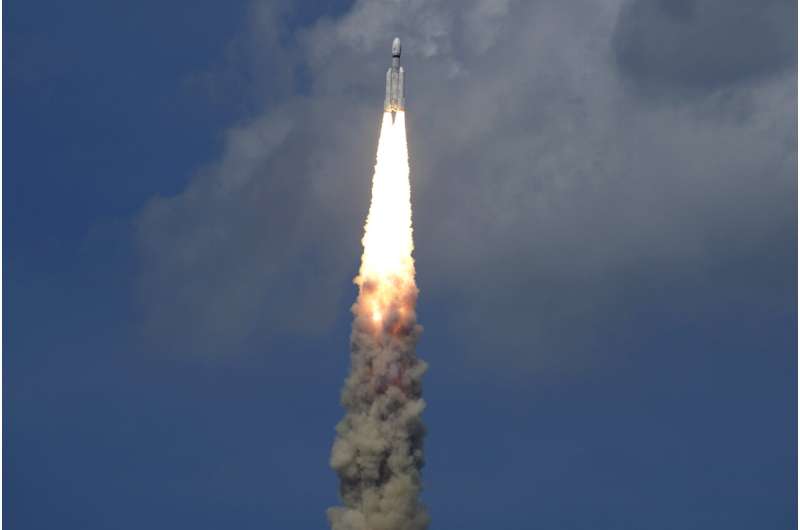
Week in images: 10-14 July 2023

Week in images: 10-14 July 2023
Discover our week through the lens
India launches cut-price mission to land on Moon
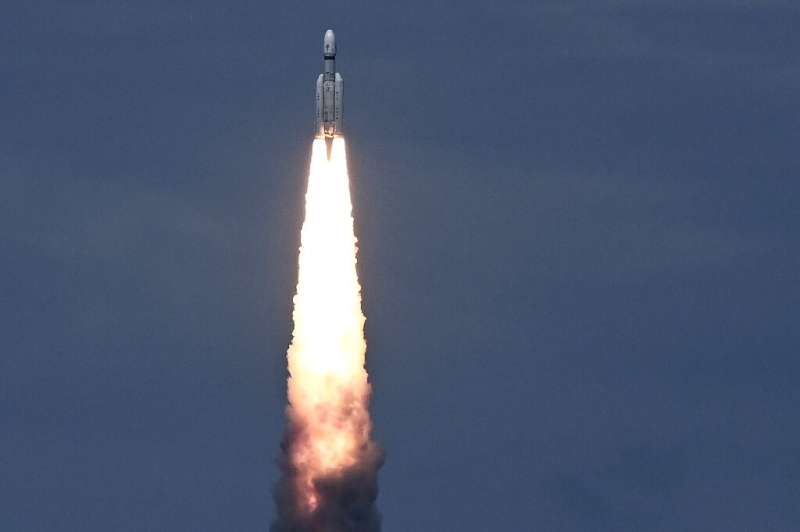
India launched a rocket on Friday carrying an unmanned spacecraft to land on the Moon, its second attempt to do so as its cut-price space program seeks to reach new heights.
The heavyweight LVM3-M4 rocket lifted off from Sriharikota in the southern state of Andhra Pradesh carrying the Chandrayaan-3 spacecraft, as thousands of enthusiasts clapped and cheered.
"Chandrayaan-3... has begun its journey to the Moon. Health of the spacecraft is normal," the Indian Space Research Organisation (ISRO) said on Twitter.
The world's most populous nation has a comparatively low-budget aerospace program that is rapidly closing in on the milestones set by global space powers.
Only Russia, the United States and China have previously achieved a controlled landing on the lunar surface.
India's last attempt to do so ended in failure four years ago, when ground control lost contact moments before landing.
The future, by the box: 10 years of ESA Technology CubeSats
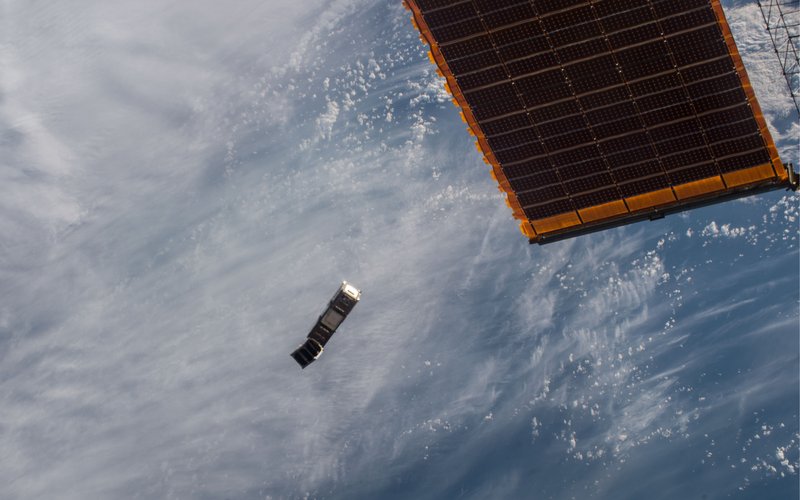
Imagine building yourself a small satellite out of standardised 10-cm boxes. Such humble nanosatellites are called CubeSats, first devised as an educational tool but increasingly performing valuable work in space. ESA’s CubeSat Systems Unit has been utilising CubeSats for a decade now to test out innovative new technologies – resulting in seven missions to date with many more on the way.
Infographic: ESA Technology CubeSats, the first 10 years
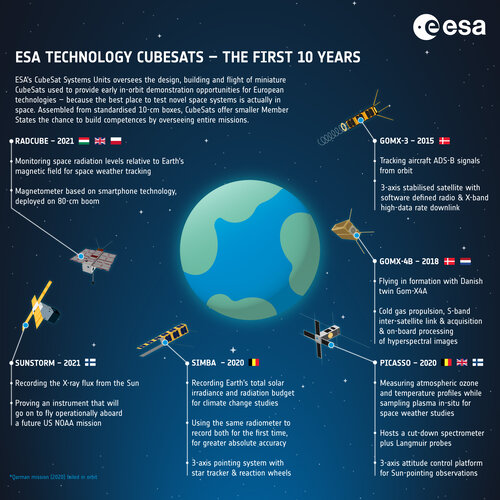 Image:
Infographic: ESA Technology CubeSats, the first 10 years
Image:
Infographic: ESA Technology CubeSats, the first 10 years India launches rocket to land spacecraft on Moon
 India on Friday launched a rocket seeking to land an unmanned spacecraft on the surface of the Moon, a live feed showed, its second attempt to become only the fourth country to do so.
The rocket lifted off from Sriharikota in the southern state of Andhra Pradesh carrying the Chandrayaan-3 spacecraft, as thousands of enthusiasts clapped and cheered.
The world's most populous nation has a
India on Friday launched a rocket seeking to land an unmanned spacecraft on the surface of the Moon, a live feed showed, its second attempt to become only the fourth country to do so.
The rocket lifted off from Sriharikota in the southern state of Andhra Pradesh carrying the Chandrayaan-3 spacecraft, as thousands of enthusiasts clapped and cheered.
The world's most populous nation has a ESA moves ahead with In-Orbit Servicing missions

Isn’t it strange that when satellites run out of fuel or a single component breaks down, we just discard them? ESA and European industry have joined forces to make sure that our satellites can live on.
Earth from Space: Ethiopian painting
 Image:
Reminiscent of an artist’s pallet, this striking false-colour image captured by the Copernicus Sentinel-2 mission features Lake Abbe in northeast Ethiopia.
Image:
Reminiscent of an artist’s pallet, this striking false-colour image captured by the Copernicus Sentinel-2 mission features Lake Abbe in northeast Ethiopia. 































